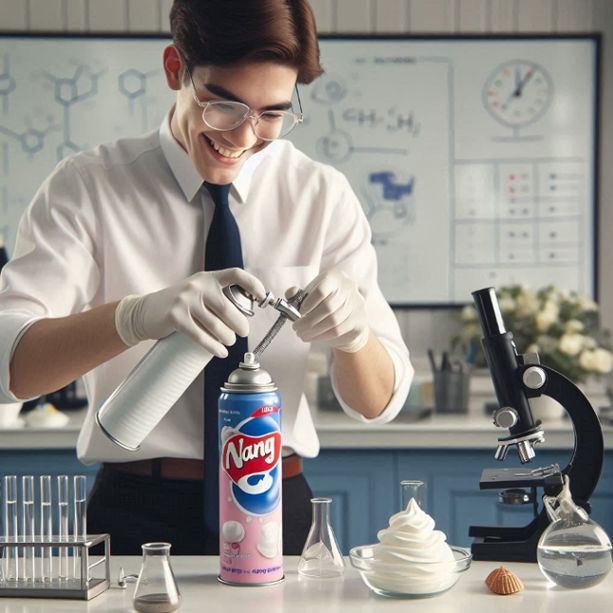 Early-stage growth looks different for every small business, but entrepreneurship researchers keep circling back to the same handful of patterns. These patterns are not fast tricks or hidden tactics, they are repeatable behaviors and formation decisions that consistently give young organizations a better chance at gaining traction and surviving their most vulnerable years. When data is viewed as a whole, a practical picture forms: small businesses tend to grow through smart resource stacking, customer-first testing, operational discipline, and gradual scaling that protects momentum without overextending budgets. Even community-centered platforms reinforce this, including community-centered platform resources from Stand With Main Street, which support founders and charities with business-focused toolkits, templates, and a guide-driven path to launching and growing with clarity instead of chaos.
Early-stage growth looks different for every small business, but entrepreneurship researchers keep circling back to the same handful of patterns. These patterns are not fast tricks or hidden tactics, they are repeatable behaviors and formation decisions that consistently give young organizations a better chance at gaining traction and surviving their most vulnerable years. When data is viewed as a whole, a practical picture forms: small businesses tend to grow through smart resource stacking, customer-first testing, operational discipline, and gradual scaling that protects momentum without overextending budgets. Even community-centered platforms reinforce this, including community-centered platform resources from Stand With Main Street, which support founders and charities with business-focused toolkits, templates, and a guide-driven path to launching and growing with clarity instead of chaos.
Start with a clear problem, not a broad idea.
Studies on successful startups show that an early focus on a specific customer problem is one of the strongest predictors of growth. Broad ideas feel exciting, but they make it hard to build something people actually want. When founders start with a defined problem and verify that real people experience it, they cut the risk of wasting time and money.
Research from the lean-startup field experiments shows that talking to customers before building anything reduces the number of failed product launches. Early interviews reveal needs, willingness to pay, and what features matter most. They also help founders avoid the assumption that they already know what customers want.
Move quickly with small, testable steps.
Speed matters, but not the frantic kind. What works is rapid learning, not rapid expansion. Small organizations grow faster when they test ideas in manageable pieces and adjust based on what they learn. Scholars call this approach effectual thinking or iterative experimentation, and it appears again and again in entrepreneurial research.
Instead of committing to a big plan, growing companies run small tests: a simple landing page, a small batch of a product, or a pilot service. These tests generate real data, such as who clicked, who bought, and who ignored the offer. That data shapes the next move. Businesses that use iterative testing are better at identifying profitable segments and refining their offering before spending heavily.
Keep early operations simple.
Complex systems break easily in young companies. Several studies on small business survival point out that early operational simplicity helps founders stay flexible. Basic processes, clear responsibilities, and straightforward pricing models reduce confusion and allow teams to adjust quickly.
This doesn’t mean being unprofessional. It means not overbuilding too soon. A lightweight structure lets small businesses shift direction when they discover a better opportunity or a more efficient way to serve customers.
Use limited resources wisely.
Most small organizations start with tight budgets. Research shows that the most resilient ones treat constraints as design parameters rather than obstacles. This resourcefulness, often called frugality or a bootstrapping strategy in entrepreneurship literature, leads to smarter spending and more creativity.
Bootstrapped companies often:
- build early versions of products in-house
- use free or low-cost tools until revenue supports upgrades
- rely on customer payments instead of large loans
- form partnerships instead of hiring full teams
Studies find that these practices reduce early financial risk and keep businesses from collapsing under debt. They also force founders to prioritize what truly matters for growth.
Build relationships before you need them.
Growth rarely happens in isolation. Research on small business ecosystems shows that strong networks make a measurable difference. Early relationships with suppliers, local business groups, advisors, or even friendly competitors can open doors to new customers and new opportunities.
One well-documented benefit is access to informal knowledge, such as tips, warnings, or insights that aren’t written anywhere. These networks also provide social support, which can reduce burnout, a common issue during the first two years of operation.
Focus on one dependable revenue stream before expanding
It’s tempting to chase multiple ideas at once. But the data tells a different story. Businesses that focus on one core revenue engine in the early phase are more likely to stabilize and grow. When a single offering gains consistent traction, it creates the cash flow and confidence needed to expand later.
Researchers call this sequenced expansion. It doesn’t mean ignoring new opportunities. It means building a solid base first, then layering new offers once the organization can handle more complexity.
Pay attention to customer retention.
Customer acquisition gets most of the attention, but retention is often a stronger growth driver for small businesses. Several studies in the service and retail industries show that returning customers spend more, refer more, and require less marketing budget.
Small businesses with high retention tend to focus on a few simple habits:
- responding quickly to questions
- delivering consistent quality
- showing appreciation
- making the customer experience easy
These actions don’t require large budgets. They need care and consistency, which young organizations can usually provide more easily than large ones.
Stay adaptable as conditions change.
Economic conditions shift. Customer behavior shifts. Competitors emerge. This adaptability isn’t impulsive. It’s grounded in paying attention, tracking results, and making adjustments when the data points in a new direction.
Founders who adjust their strategy based on learning rather than fear tend to grow more steadily.
The bottom line
Early business growth isn’t magic. It’s a series of practical choices backed by research and reinforced by the experience of thousands of small organizations. Start with a clear customer problem. Test ideas in small steps. Keep operations simple. Use limited resources thoughtfully. Build real relationships. Strengthen one revenue stream before adding more. And stay flexible enough to adapt as you learn.
These habits improve the odds of growth. For small businesses navigating their early years, improving the odds is often what makes progress possible.




 Chinese clothing for women (source: pour Femme) has a long and colorful history. From the flowing Hanfu robes of ancient dynasties to the elegant Qipao of the 20th century, these garments tell a story about the country’s culture, identity, and progress. In today’s world, where modernization and technology are moving fast, science and education play a big role in helping preserve and promote these traditional styles.
Chinese clothing for women (source: pour Femme) has a long and colorful history. From the flowing Hanfu robes of ancient dynasties to the elegant Qipao of the 20th century, these garments tell a story about the country’s culture, identity, and progress. In today’s world, where modernization and technology are moving fast, science and education play a big role in helping preserve and promote these traditional styles.


 In today’s fast-paced world, efficiency is key in every industry, and towing professionals are no exception. With the increasing demands of 24/7 roadside assistance, it’s crucial for tow truck operators to have the right tech solutions to maximize their efficiency. Thankfully, advancements in technology have provided an array of tools that can streamline operations and enhance customer satisfaction. It’s essential for towing companies to navigate the digital landscape effectively to ensure their success and attract new customers.
In today’s fast-paced world, efficiency is key in every industry, and towing professionals are no exception. With the increasing demands of 24/7 roadside assistance, it’s crucial for tow truck operators to have the right tech solutions to maximize their efficiency. Thankfully, advancements in technology have provided an array of tools that can streamline operations and enhance customer satisfaction. It’s essential for towing companies to navigate the digital landscape effectively to ensure their success and attract new customers.


 Games are entertainment. A lot of personalities and characteristics are being revealed through games. Why? Because you might be playing because you just enjoy it, you want to bond with your friends, you might just want to follow a trend, or of course, you want to win and be known as one of the best gamer.
Games are entertainment. A lot of personalities and characteristics are being revealed through games. Why? Because you might be playing because you just enjoy it, you want to bond with your friends, you might just want to follow a trend, or of course, you want to win and be known as one of the best gamer.
 Touch is one of our most fundamental human needs. From the moment we’re born, physical contact plays an important role in emotional regulation, stress relief, and healthy development. Platforms like OPCMD help connect users in Korea to professional massage and wellness providers, making access to these vital services easier and more trustworthy.
Touch is one of our most fundamental human needs. From the moment we’re born, physical contact plays an important role in emotional regulation, stress relief, and healthy development. Platforms like OPCMD help connect users in Korea to professional massage and wellness providers, making access to these vital services easier and more trustworthy.





 One of the most significant developments in this realm is the use of artificial intelligence and machine learning algorithms to identify and categorize various types of waste. By utilizing image recognition technology, cutting-edge applications can quickly analyze discarded items and determine whether they belong in a landfill, recycling bin, or donation center. This automation allows for faster sorting, reducing the time spent manually examining each piece of junk. Consequently, rubbish removal services can operate more efficiently, minimizing the costs associated with labor and disposal while maximizing their overall effectiveness.
One of the most significant developments in this realm is the use of artificial intelligence and machine learning algorithms to identify and categorize various types of waste. By utilizing image recognition technology, cutting-edge applications can quickly analyze discarded items and determine whether they belong in a landfill, recycling bin, or donation center. This automation allows for faster sorting, reducing the time spent manually examining each piece of junk. Consequently, rubbish removal services can operate more efficiently, minimizing the costs associated with labor and disposal while maximizing their overall effectiveness. When it comes to rubbish removal, many find themselves at a crossroads: should they tackle the task themselves or hire professionals?
When it comes to rubbish removal, many find themselves at a crossroads: should they tackle the task themselves or hire professionals? 

 Science and education are integral parts of our lives. They drive progress, inspire innovation, and shape the future. On the other hand, vintage trailers by gtservices vintage trailers evoke a sense of nostalgia and adventure. They remind us of simpler times and the joy of exploration. Combining these two seemingly unrelated areas can lead to unique and enriching experiences.
Science and education are integral parts of our lives. They drive progress, inspire innovation, and shape the future. On the other hand, vintage trailers by gtservices vintage trailers evoke a sense of nostalgia and adventure. They remind us of simpler times and the joy of exploration. Combining these two seemingly unrelated areas can lead to unique and enriching experiences.

 The art of glass polishing stands out as a fascinating intersection of science and skill. This process, which might seem simple at first glance, involves a deep understanding of materials and techniques, making it an intriguing subject for anyone interested in science, education, or even taking on a new DIY project.
The art of glass polishing stands out as a fascinating intersection of science and skill. This process, which might seem simple at first glance, involves a deep understanding of materials and techniques, making it an intriguing subject for anyone interested in science, education, or even taking on a new DIY project.


